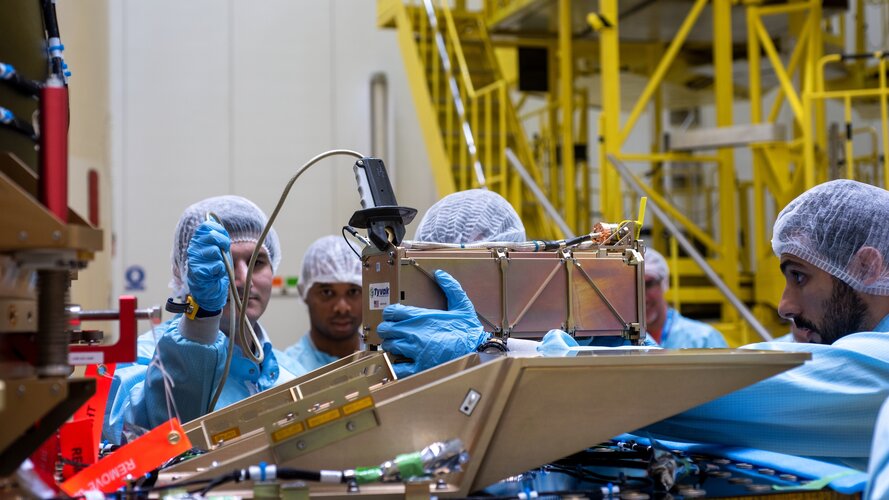
A flying laboratory, ESA’s OPS-SAT will be the first of its kind, with the sole purpose of testing and validating new techniques in mission control and on-board satellite systems.
OPS-SAT is devoted to demonstrating drastically improved mission control capabilities, that will arise when satellites can fly more powerful on-board computers. The satellite is only 30cm high, but it contains an experimental computer ten times more powerful than any current ESA spacecraft.
It is very difficult to perform live testing of mission control systems. No-one wants to take any risk with an existing, valuable satellite, so testing new procedures, techniques or systems in orbit is not often possible.
The OPS-SAT solution is to design a low-cost satellite that is rock-solid safe and robust, even if there are any malfunctions due to testing.
The robustness of the basic satellite itself will give ESA flight control teams the confidence they need to upload and try out new, innovative control software submitted by experimenters; the satellite can be pushed to its limits but can always be recovered if something goes wrong.
Achieving this level of performance and safety at a low cost is a challenge. To do this, OPS-SAT combines off-the-shelf subsystems typically used with cubesats, the latest terrestrial microelectronics for the on-board computer and the experience ESA has gained in operating satellites for the last 40 years in keeping missions safe.
https://www.esa.int/Enabling_Support/Operations/OPS-SAT
Click here for original story, OPS-SAT
Source: ESA Top Multimedia